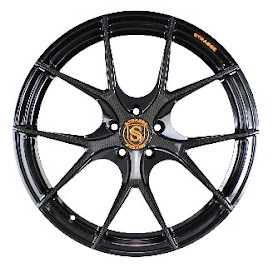INTRODUCTION
Rims are an essential component of a vehicle's functionality and appearance, providing as more than just a tire support system. Choosing the correct rims is essential if you want to improve the handling or appearance of your vehicle. There are many different kinds of rims available, each with unique qualities and uses, therefore it's critical to know about them in order to select the ideal one for your car.
TYPES OF RIMS
There are several types of rims, each catering to different needs and preferences.
1. STEEL RIMS
Steel rims are known for being reasonably priced and long-lasting. These rims are an excellent choice for cars operated in cold conditions or in the winter because they are heavy but highly strong. They are frequently chosen for their dependability and affordability, even though they are not as fashionable as other options.
2. ALLOY RIMS
Alloy rims are lightweight and available in a range of fashionable styles. These rims, which are made of a magnesium or aluminum combination, improve a car's handling and fuel economy. Because of their streamlined design and practical advantages, they are commonly used in modern passenger and performance cars.
3. CHROME RIMS
For those seeking a luxurious and flashy look, chrome rims are a popular choice. The highly polished, glossy surface of these rims gives any vehicle a luxurious look. They need to be maintained frequently to maintain their mirror-like shine, even though their beauty is the main reason they were chosen.
4. FORGED RIMS
The strength and lightweight design of forged rims make them highly attractive. Often used in luxury and high-performance cars, these rims are made using a unique forging process and are extremely strong. They are perfect for drivers that value longevity and performance due to their excellent build quality.
5. SPLIT RIMS (MULTI-PIECE RIMS)
Multi-piece rims, which are made up of two or three separate parts, offer an additional choice for enthusiasts. Through the possibility to mix, match, or replace individual elements, these rims allow an amazing amount of customisation. Because of their versatility and unique look, they are particularly well-liked in the tuning and customizing community.
6. WIRE SPOKE RIMS
Wire spoke rims add a timeless charm for fans of antique and classic cars. These rims, which have elaborate wire patterns, are frequently seen on vintage cars. Even though they are less popular now, many who restore vintage vehicles or want to achieve a classic look still like them.
7. CARBON FIBER RIMS
For sports and racing cars, carbon fiber rims are a cutting-edge choice. These rims are perfect for optimizing acceleration and quickness because they are extremely strong and lightweight. However, they are among the priciest solutions available due to their complex materials and manufacturing method.
Selecting the ideal rim requires striking a balance between cost, functionality, and appearance. Forged rims meet high-performance requirements, alloy rims provide lightweight performance and style, and steel rims provide durability and practicality. Multi-piece rims are a great choice for individuals seeking customisation, while wire spoke and chrome rims are ideal for improving a car's aesthetic appeal. For sports fans, carbon fiber rims represent the ultimate in innovation, despite their high cost. You may choose the rim type that best suits your car by being aware of the characteristics of the various types. Investigate your possibilities and use your rims to express your distinct driving style!









